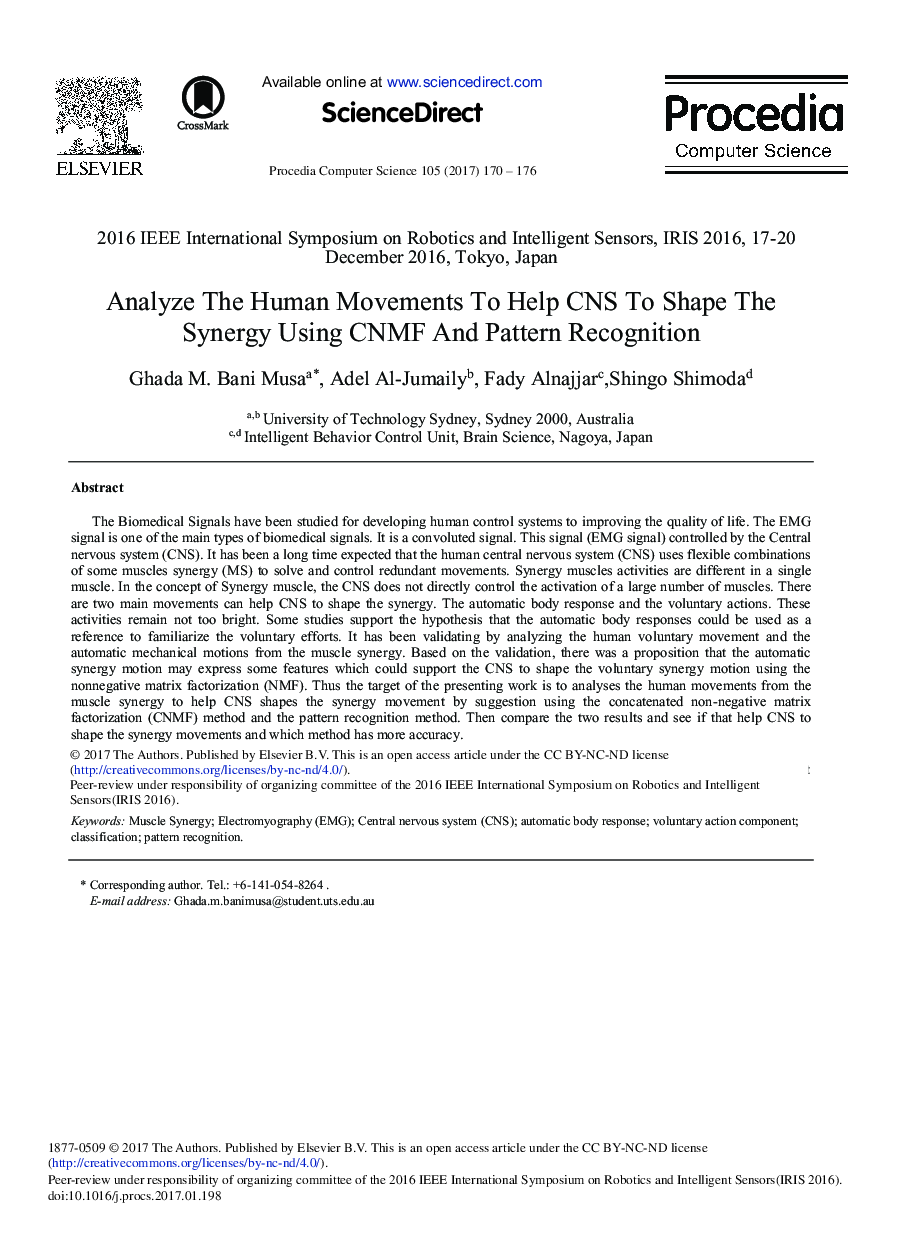| کد مقاله | کد نشریه | سال انتشار | مقاله انگلیسی | نسخه تمام متن |
|---|---|---|---|---|
| 4961557 | 1446510 | 2017 | 7 صفحه PDF | دانلود رایگان |

The Biomedical Signals have been studied for developing human control systems to improving the quality of life. The EMG signal is one of the main types of biomedical signals. It is a convoluted signal. This signal (EMG signal) controlled by the Central nervous system (CNS). It has been a long time expected that the human central nervous system (CNS) uses flexible combinations of some muscles synergy (MS) to solve and control redundant movements. Synergy muscles activities are different in a single muscle. In the concept of Synergy muscle, the CNS does not directly control the activation of a large number of muscles. There are two main movements can help CNS to shape the synergy. The automatic body response and the voluntary actions. These activities remain not too bright. Some studies support the hypothesis that the automatic body responses could be used as a reference to familiarize the voluntary efforts. It has been validating by analyzing the human voluntary movement and the automatic mechanical motions from the muscle synergy. Based on the validation, there was a proposition that the automatic synergy motion may express some features which could support the CNS to shape the voluntary synergy motion using the nonnegative matrix factorization (NMF). Thus the target of the presenting work is to analyses the human movements from the muscle synergy to help CNS shapes the synergy movement by suggestion using the concatenated non-negative matrix factorization (CNMF) method and the pattern recognition method. Then compare the two results and see if that help CNS to shape the synergy movements and which method has more accuracy.
Journal: Procedia Computer Science - Volume 105, 2017, Pages 170-176